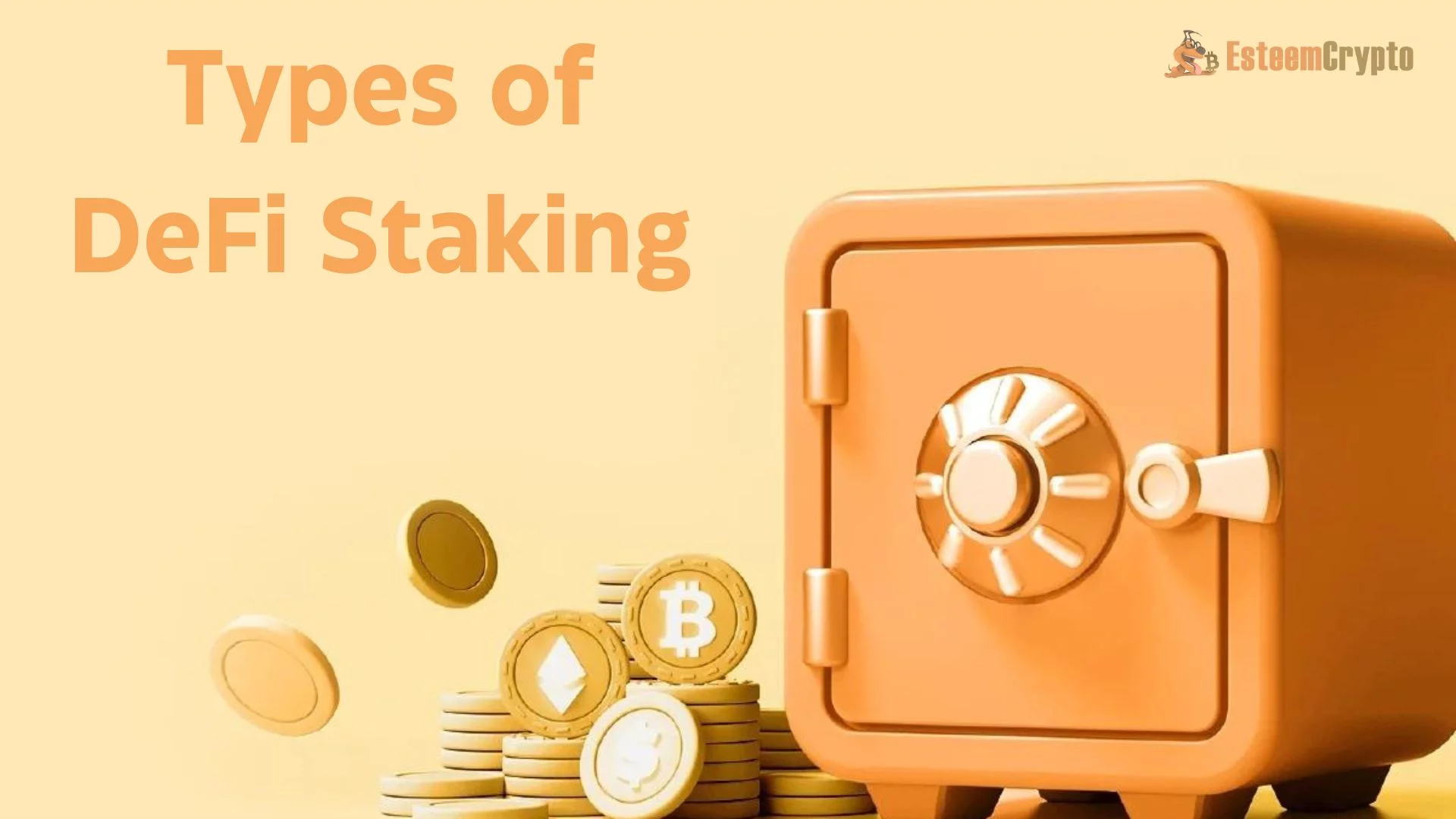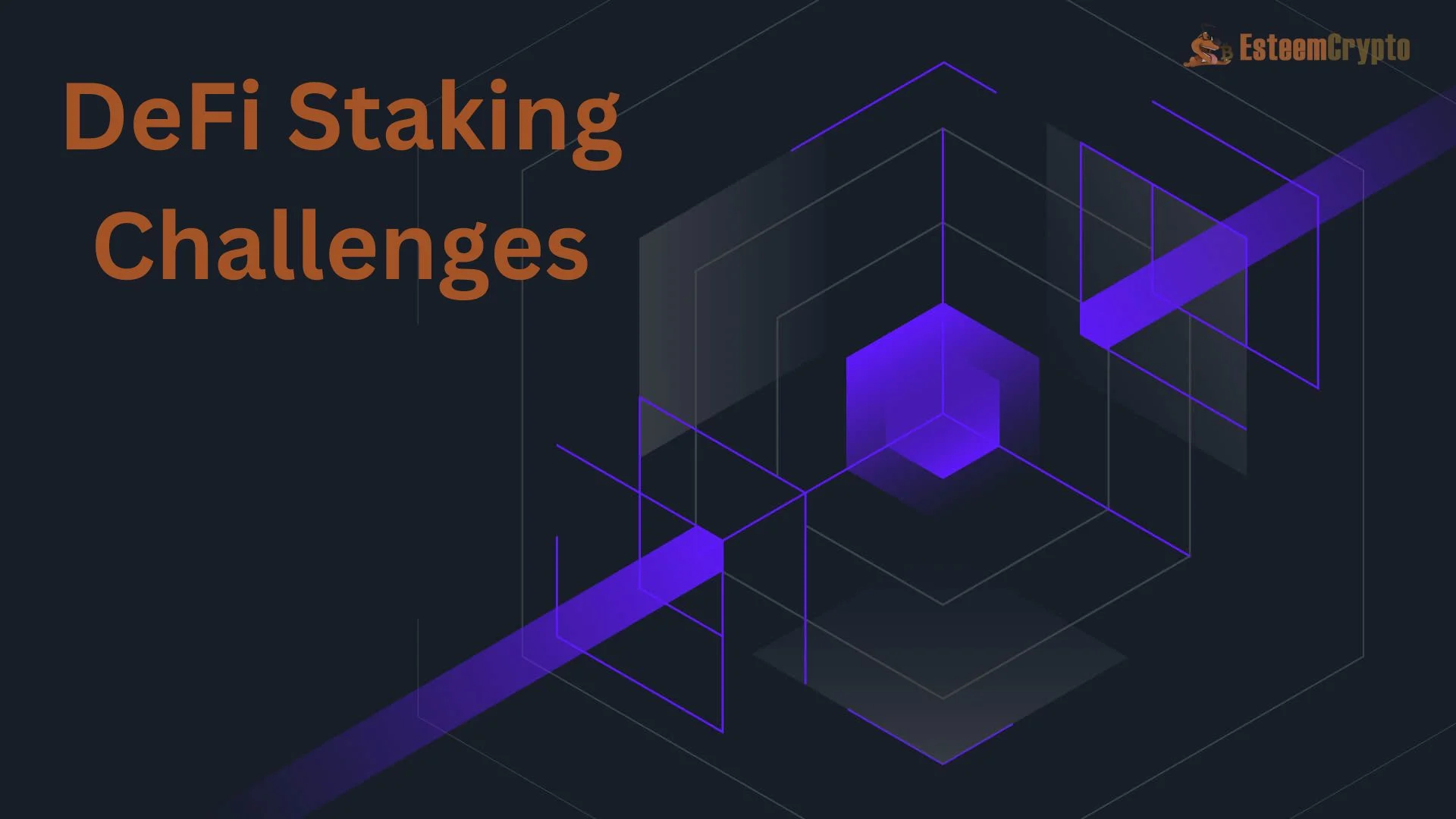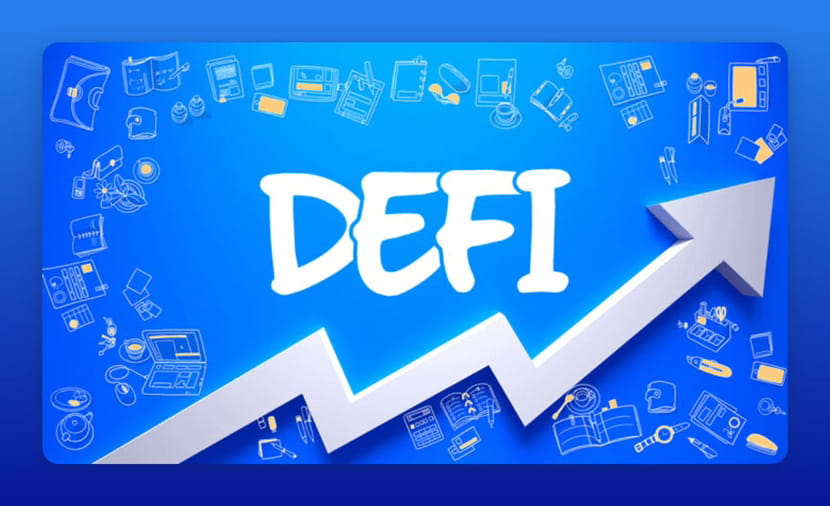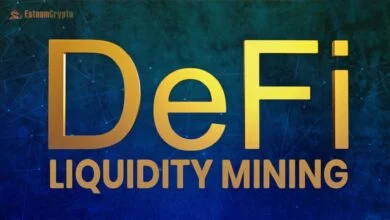DeFi Staking: The Future of Decentralized Finance

DeFi Staking: A game-changer in blockchain and cryptocurrencies, decentralized finance (DeFi) is an emerging trend. DeFi aspires to decentralize traditional financial systems by eliminating intermediaries like banks and providing services like lending, borrowing, and staking directly to users. One of the numerous features of DeFi that has become popular is staking, which allows users to earn passive revenue. Here, we’ll look at DeFi staking and see how it works, what its benefits and risks are, and how it will affect the financial industry in the future.
What is DeFi Staking?
DeFi staking refers to locking or delegating cryptocurrency tokens in a DeFi platform or protocol to help validate transactions, secure the network, or provide liquidity. In return, stakers earn rewards, typically paid in the platform’s native cryptocurrency or governance tokens. This concept stems from the Proof-of-Stake (PoS) consensus mechanism, where validators, rather than miners, maintain the integrity of the blockchain.
In traditional PoS networks, validators are selected based on the number of staked coins. However, DeFi staking extends beyond simple blockchain validation. Stakers can now participate in various ways, including yield farming, liquidity mining, and liquidity pool staking.
Types of DeFi Staking
- Network Staking: This involves staking tokens directly to help secure a blockchain network that operates on PoS or Delegated Proof of Stake (DPoS). Users delegate their tokens to validators who run nodes, and these validators receive staking rewards, which are then shared with the token holders.
- Liquidity Pool Staking: One of the most popular forms of staking in DeFi involves providing liquidity to decentralized exchanges (DEXs) like Uniswap, SushiSwap, or PancakeSwap. By depositing token pairs into liquidity pools, stakers facilitate trading and earn a portion of the transaction fees and additional rewards.
- Yield Farming: Yield farming, known as liquidity mining, allows users to stake tokens in various DeFi protocols to maximize returns. Users stake their tokens in lending or borrowing platforms like Aave or Compound to earn interest or governance tokens, which can often be reinvested for even higher yields.
- Synthetic Asset Staking: Some DeFi platforms allow users to stake tokens to mint synthetic assets, which are representations of real-world assets like stocks, commodities, or fiat currencies. For example, Synthetix allows stakers to lock their tokens to mint synthetic assets and earn rewards.
- Cross-Chain Staking: As the DeFi ecosystem grows, the need for interoperability between blockchains has increased. Cross-chain staking allows users to stake tokens from one blockchain to participate in DeFi protocols on another blockchain through bridges like Cosmos and Polkadot.
How DeFi Staking Works
DeFi staking operates similarly to traditional PoS staking, with some additional complexities due to the wide range of DeFi applications. The basic process of staking in a DeFi protocol involves the following steps:
- Choose a Staking Platform: The first step is selecting a DeFi protocol or platform that supports staking. Popular platforms include Aave, Compound, Yearn Finance, and Curve, each offering different staking opportunities.
- Connect a Wallet: Staking requires a non-custodial wallet such as MetaMask, Trust Wallet, or Coinbase Wallet. These wallets allow users to interact with decentralized applications (dApps) and manage their staked tokens.
- Select the Asset: Users choose the cryptocurrency or token they wish to stake once connected. The chosen asset could be a native token of the platform or a liquidity pool token.
- Stake the Tokens: Users can lock their tokens into the platform after selecting the asset. The staking contract will specify the lock-up period, reward rate, and potential early withdrawal penalties.
- Earn Rewards: Once tokens are staked, users begin to earn rewards, which are typically distributed periodically (daily, weekly, etc.). The rewards can be harvested or reinvested to compound gains.
Benefits of DeFi Staking
Earning Passive Income
One of the most attractive aspects of DeFi staking is the potential for earning passive income. By staking their assets, users can earn rewards without needing to trade or manage their investments actively.
Supporting Network Security and Operations
Staking plays a vital role in securing decentralized networks. By locking up assets, participants help protect the network from attacks and ensure its proper functioning. This decentralized approach to network security contrasts with traditional financial systems, where centralized entities oversee these functions.
Access to New Opportunities
Many DeFi projects offer staking to participate in governance and decision-making processes. Stakers often receive voting power or governance tokens, allowing them to influence protocol upgrades and changes.
Challenges and Risks
Smart Contract Risks
DeFi staking relies heavily on smart contracts, susceptible to coding errors and vulnerabilities. Bugs or exploits in these contracts can lead to significant losses for stakers. Users must conduct thorough research and select reputable protocols with robust security measures.
Market Volatility
Cryptocurrency markets are notoriously volatile. The value of staked assets can fluctuate significantly, impacting the overall returns. While staking provides a steady income stream, the underlying asset’s value may decline, potentially offsetting the rewards earned.
Liquidity Concerns
In some staking arrangements, assets are locked up for a fixed period, reducing liquidity. Users may face difficulties accessing their funds or may incur penalties if they need to withdraw their staked assets prematurely.
Regulatory Uncertainty
The regulatory environment for DeFi is still evolving. Changes in regulations or legal frameworks can impact staking mechanisms and reward structures. Users should stay informed about regulatory developments in their jurisdiction to avoid potential compliance issues.
Recent Developments in DeFi Staking
Integration with Layer 2 Solutions
Layer 2 scaling solutions, such as Optimistic Rollups and zk-Rollups, are integrated with DeFi staking protocols to improve transaction throughput and reduce fees. These solutions aim to enhance the efficiency of staking operations while maintaining security and decentralization.
Introduction of Multi-Asset Staking
Some DeFi projects now offer multi-asset staking options, allowing users to stake a diverse range of assets within a single protocol. This approach can reduce risk by spreading investments across various assets and protocols.
Enhanced Governance Models
Recent developments have introduced more sophisticated governance models within staking protocols. These models enable stakers to have a greater say in the direction and management of the protocol, fostering a more engaged and active community.
Environmental Considerations
As DeFi continues to grow, there is an increasing focus on the environmental impact of staking. Some protocols are exploring eco-friendly consensus mechanisms and energy-efficient practices to address concerns about the carbon footprint of blockchain networks.
The Future of DeFi Staking
The evolution of DeFi staking is closely tied to the overall growth of the DeFi ecosystem. As more traditional financial services become decentralized, the demand for staking opportunities will continue to rise. Key trends to watch for include:
- Cross-Chain Staking and Interoperability: As DeFi expands beyond Ethereum, cross-chain solutions enabling staking across multiple blockchains will foster a more interconnected and robust ecosystem.
- Institutional Adoption: Large institutions are beginning to explore DeFi staking to generate yield on idle assets. As institutional interest grows, staking could become a key component of traditional finance portfolios.
- Staking as a Service (SaaS): Several platforms already offer Staking-as-a-Service, allowing users to delegate their responsibilities to third parties in exchange for a fee. This service will likely expand as the demand for simplified staking solutions increases.
- Layer 2 Solutions: Ethereum’s high gas fees have been a barrier to entry for smaller stakers. However, Layer 2 solutions like Arbitrum, Optimism, and zk-Rollups offer reduced transaction costs and faster settlement times, making staking more accessible.
Conclusion
DeFi staking represents a powerful tool for individuals and institutions looking to earn passive income, contribute to network security, and participate in the growing decentralized financial ecosystem. While it offers numerous benefits, stakers should be mindful of the risks involved and conduct thorough research before committing their assets. As DeFi continues to evolve, staking will likely remain at the forefront of this financial revolution, providing opportunities for both seasoned crypto enthusiasts and newcomers.




